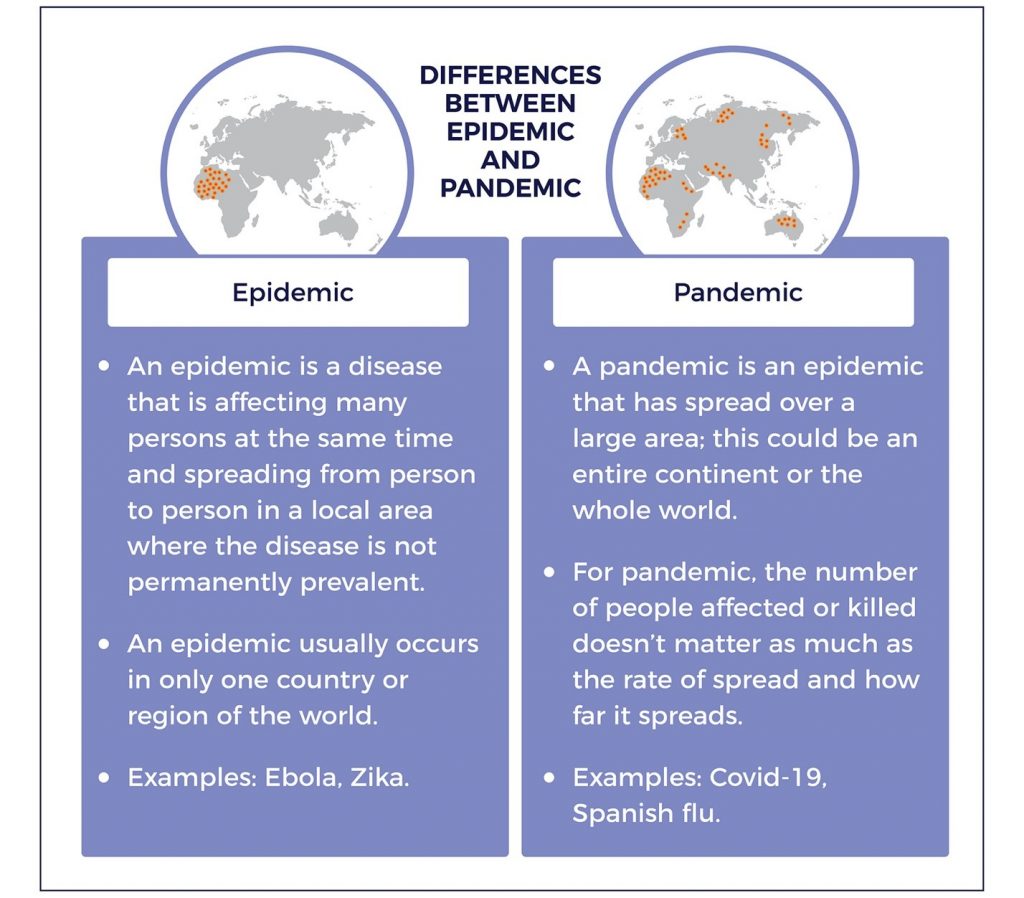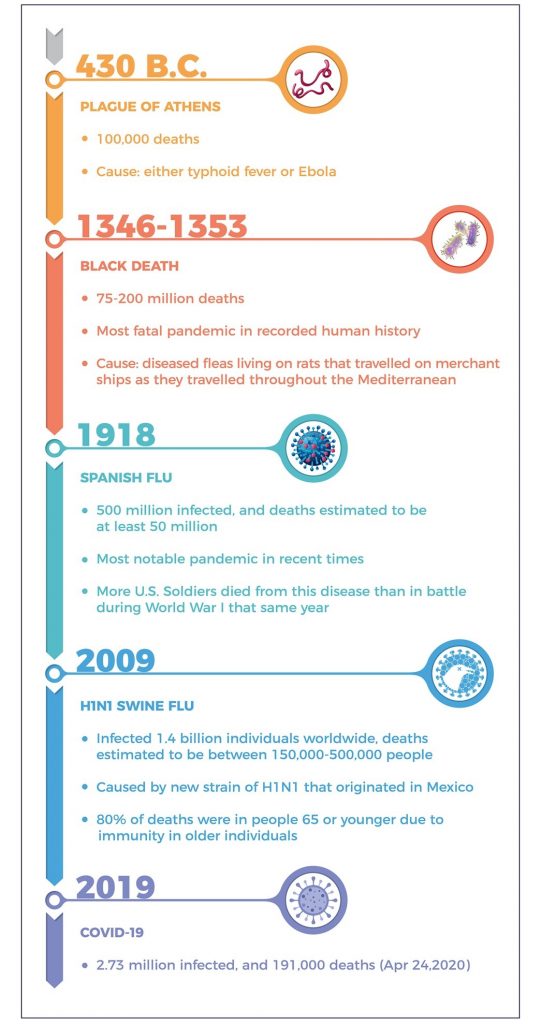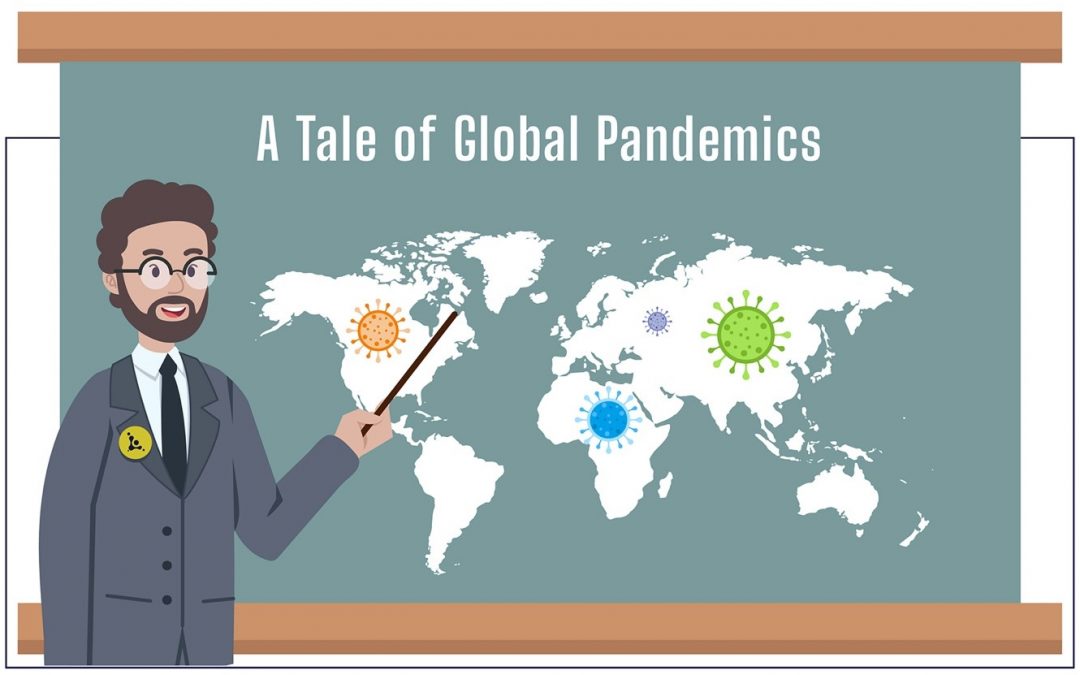This article is part 1 of a mini-series focusing on the progression of global pandemics. This instalment explores the history of past pandemics and how they relate to the current COVID-19 situation.
While it may seem that our current Covid self-quarantine has brought upon unprecedented times, the COVID-19 global pandemic is most certainly not the first in history. In fact, records of outbreaks dating to as early as 430 B.C. indicate that now-familiar pathogens like Ebola and typhoid fever posed a threat to the major civilizations of the past, reaching similar scales to what we see today. Like COVID-19, these threats progressed to epidemic and in some cases pandemic proportions, highlighting an important distinction essential to understanding our current dilemma.

According to the World Health Organization, an epidemic is a disease that is affecting many persons at the same time and spreading from person to person in a local area where the disease is not permanently prevalent. On the other hand, a pandemic is an epidemic that has spread over a larger area, such as an entire continent.
By understanding these key terms, we are now more prepared to delve into the major historical pandemics that history has left to our modern understanding. The timeline below highlights several of these in detail, from their relative scales to the particular nature of their spread through populations.

The Plague of Athens makes a notable example of an epidemic, in that it was relatively isolated even in the early cosmopolitan society of ancient Greece. By contrast, the Black Death makes a chilling example of a pandemic outbreak that spread across the entirety of Europe with devastating results. While the term “epidemic” itself originates roughly 2500 years ago with Hippocrates, it was ultimately the need to describe and grapple with the pandemic that scoured Europe in the 1300’s that brought the term into common usage.
Just as interesting as their progressions, the causes of these historical outbreaks are much closer to the threats we face today than we might imagine. Diseases that seem to appear suddenly in the world today such as Ebola and Typhoid fever have actually existed among us for centuries. Thanks to modern medical practices, these conditions have been minimized in today’s society and have not brought about the same dangers as pandemics in the past. With time, modern medicine will also be able to conquer COVID-19.
This discussion of several global pandemics has hopefully brought about a new perspective on the current COVID-19 pandemic. While these are incredibly difficult times for many, the impact of such scenarios has been felt before in history. Throughout this time, we must persevere as a society under self-quarantine to protect those that are most vulnerable. This too shall pass, just as other pandemics have come and gone before. With this in mind, my next article will explore the role vaccines play in fighting this age-old menace and relate them to a potential vaccine for COVID-19!
Stay Safe,
- Professor K
About CSOFT Health Sciences
CSOFT Health Sciences provides end-to-end medical translations for all phases of the product lifecycle, from pre-clinical to post-launch. We also specialize in market access consulting, medical writing, and CTD/eCTD submissions with the FDA, EMA, and NMPA. Our operations are compliant with ISO 17100 and certified in ISO 9001:2015 and ISO 13485:2016, ensuring our customized solutions meet the rigorous regulatory requirements of global submissions.
About CSOFT
CSOFT International is a leading provider of cross-border communications for enterprises seeking growth in global markets. Our expertise in localization, documentation, and branding encompasses a full range of end-to-end content and consulting services that we deliver in over 250 languages. With a focus in health sciences and smart technology, we work closely with our clients to deliver precision solutions to the challenges of engaging markets, consumers, and regulatory environments worldwide.
